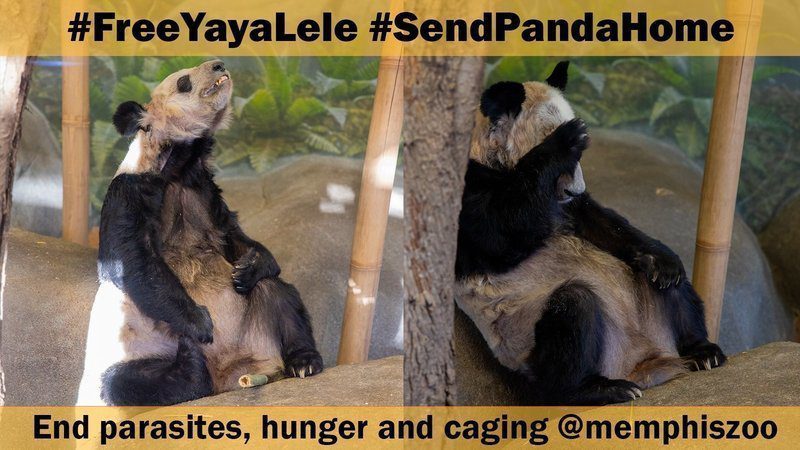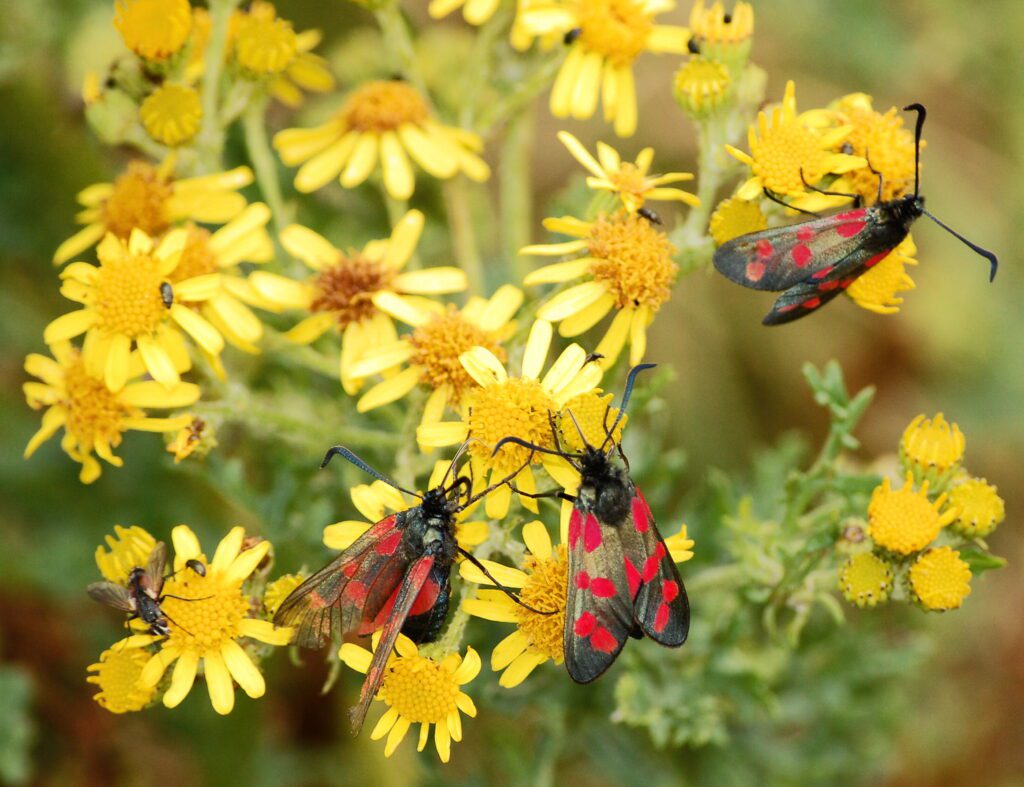


Vested interests and hidden agendas often determine the treatment of animals in zoos, which heavily impacts the animals’ welfare, mentally, physically, and emotionally.
By Florence Foo, Si Cheng, Taciana Santiago, and Brittany Michelson, Independent Media Institute
9 min read
Zoos are often viewed as places of entertainment where humans can appreciate the beauty of the various species that can be found in different ecosystems on the planet. Many parents take their children to visit these facilities to let them experience being close to animals, educate them about the species, and emphasize the importance of protecting them. The reality of this seemingly ideal scenario is, however, much more complex and appalling. Animals in zoos suffer greatly and are exploited for entertainment under the guise of education and conservation.
While zoos claim they help to educate the public by giving people an opportunity to observe diverse animals and are also commonly seen as having a role to play in species conservation since they often conduct research and breed animals, at the end of the day they are businesses, and like any other business, they are mainly driven by profits. Vested interests and hidden agendas often determine the treatment of animals in zoos, which heavily impacts the animals’ welfare, mentally, physically, and emotionally.
Animals in captivity do not face the challenges and the different stimulations that their counterparts who live in the wild encounter daily. Consequently, they need special enrichment such as toys, different foods and smells, and artificial challenges—like food hiding—to mentally stimulate their senses, deal with boredom, and help these animals live as happily and comfortably as they can in captivity.
Apart from the requirement of providing high-quality food and nutrition for the animals, the quality of enclosures and yards is also extremely important, as small areas and the lack of enrichment leads to stress, suffering, and the development of a mental illness calledzoochosis among animals living in captivity. This is commonly seen in zoos when animals display stereotypical behaviors. These are abnormal and repetitive behaviors such as pacing, walking in circles, banging their heads, excessive licking, playing with their own tongues, walking backward, self-harm, and other atypical habits. These behaviors are the ways in which zoo animals cope with the stress of captivity, be it related to small enclosures, long hours of caging, insufficient quality/palatable food, and several other factors.
In the case of pandas who are confined in small enclosures that often lack enrichment or any kind of stimulus or challenge for long periods, are often kept in the enclosures without access to larger external yards where they can roam, and are not given the opportunity to meet and interact with others from their group, these circumstances often lead to challenges in mating and therefore breeding. Consequently, zoos often use invasive methods like artificial insemination to maintain breeding programs.
The consequences of depriving animals of their natural habitats and forcing them to face experiences that go against their instinctive behavior can cause great harm to them, which can sometimes be irreversible. In the name of human entertainment, these zoo animals are deprived of everything “that [makes] life interesting and enjoyable” for them.
Moreover, like humans, the diet requirements, health needs, and even tastes of these animals may change as they get older. If the costs of caring for the animals are high, zoos may not be able to meet these requirements for aging animals. Consequently, it is common that these facilities do not follow the age-appropriate diet/nutrition required, resulting in animals appearing thin and malnourished, which leads to serious health problems as shown in a video of the female giant panda YaYa at the Memphis Zoo. YaYa is one of a pair of giant pandas both suffering from zoochosis and malnourishment; the other panda is a male called LeLe.
YaYa and LeLe’s heartbreaking agony and distress in Memphis Zoo has received enormous media attention, especially in February 2022 when Oscar-winning singer Billie Eilish tweeted her support for animal protection organizations who are asking for the immediate return of the pandas to a sanctuary in their home country of China. The vegan singer and songwriter’s support, followed by an official statement released by Memphis Zoo claiming that their pandas are given excellent care “and were both in good health,” brought on heated debates on social media with many questioning the definition of “good” treatment for captive animals, and whether zoos really are the best place to keep them.
The female giant panda YaYa, born in August 2000, and the male giant panda LeLe, born in July 1998, were sent to Memphis Zoo in 2003, and ever since then, for almost two decades, they have been living in small internal enclosures and sharing just one external yard. As pandas are solitary animals, YaYa and LeLe take turns using the yard.
Over the years, panda lovers have noticed a significant deterioration in both pandas’ appearance as a result of the zoo’s negligent treatment. It is apparent to visitors that their enclosures are lacking in enrichment. Interactions between the keepers and YaYa and LeLe are rarely seen. They are both very thin and often show signs of mental distress. YaYa has mites all over her body and patches of shedding fur. She has experienced several artificial inseminations over the years and had at least three miscarriages. As far as food is concerned, the quality of bamboo given to them is often yellow and dry. Consequently, they refuse to eat it and keep begging for food every day. Pandas tend to be very particular about their food as they have a good sense of smell and only eat selective types of fresh bamboo. Ninety-nine percent of pandas’ diet is bamboo so the bamboo has to be fresh; “[P]andas turn up their noses at dry or wilted leaves and discolored stalks.”
In a statement released by the Chinese Association of Zoological Gardens (CAZG), one of the institutions responsible for the loan contract of pandas between Memphis Zoo and China, the association raised important concerns related to the pandas’ health. The text stated that after medical examinations conducted in 2021 and January 2022, it was concluded that both pandas are underweight, especially YaYa; the female also has fur loss due to chronic Demodex mites, and Lele has several broken molars.
There are signs of stereotypical behaviors displayed by both animals, which is their way of expressing their mental suffering. It is not hard to witness YaYa pacing around her enclosure over and over while shaking her head and displaying self-harming behavior, or LeLe sitting and playing with his tongue and even roaring in anger after a long wait without any response. More alarming is how long both pandas’ suffering has lasted. A clip on YouTube shows that the pandas’ mental distress and abnormal behaviors began as early as 2007. With no mention of actual intervention and in-depth in situ investigations having been conducted into these behavioral patterns, the inaction of the Association of Zoos and Aquariums (AZA) contributes to the zoo’s neglect of the animals’ natural demands and well-being.
Memphis Zoo claims that the pandas have aged, and therefore, their appearance and problems are normal as per their age since YaYa is 21 years old and LeLe is 23 years old. However, YaYa and LeLe are actually among the youngest pandas among the six adult pandas in the U.S., and there are many examples of older pandas in China who look much healthier than YaYa and LeLe.
Compared to their counterparts in the wild, pandas in captivity have much longer life spans. The oldest captive panda lived to 38 years of age. This, therefore, demonstrates that YaYa and LeLe’s age does not justify their frail health. This raises questions about whether Memphis Zoo has at any point customized their diet according to the age, health, and dietary needs of both pandas. For example, elderly pandas in China who have dental issues are provided with a nutritious soft diet, such as a certain amount of bamboo shoots, a salad-like combination of vegetables, grains, bamboo leaves, dietary supplements, and pre-cut bamboo culm, which is easier to bite. On the contrary, at Memphis Zoo, most times the bamboo given to both pandas is non-preprocessed bamboo culm which is hard and thick and sometimes even yellow and dry. Not only is the bamboo hard to bite, especially for LeLe who has dental issues, but also the yellow bamboo also appears stale.
YaYa and LeLe will, no doubt, have a better life at the Dujiangyan base of the China Conservation and Research Center for the Giant Panda, their home country, which features the best environment for pandas, the best bamboo for them, and hosts the best panda vets and experts. In one video, it is possible to see that pandas are treated with love, kindness and respect in this sanctuary, which is the world’s largest nursing home for pandas. The indoor enclosure is merely an indoor room that has bars as a barrier to protect the keepers while they feed the pandas. The pandas have spacious external yards located near their natural habitat in the mountains.
The absence of suitable enclosures, enrichment, proper customized diets, and health care for these aging animals in the Memphis Zoo calls into question any benefits that the zoos claim they bring to species conservation and education. More often than not, animals in zoos are merely on display for human entertainment. The animals pay the price to entertain humans.
Animals who are born and bred in captivity, unfortunately, may not have the skills to survive in their natural habitats in the wild. However, instead of caging them and merely allowing them to survive, humans have the responsibility to help them feel at home and be themselves, so that they can thrive. This is even more important when they age and experience more challenges in their daily activities. Therefore, the animal sanctuaries that care for them with love and respect, and simply let them be themselves, are a better home for elderly animals and the ones who show obvious signs of not coping within the zoo environment. Rescued animals are given space in natural sanctuaries to heal in their own time and at their own pace.
Memphis Zoo is not necessarily representative of every zoo; however, it is a telling example of how much these animals suffer in these kinds of facilities. Captive animals need appropriate enclosures that are as natural as possible and provide plenty of space, a proper diet, good health care, and plenty of enrichment. Animals are much happier and healthier in places that focus on these aspects instead of profits. For example, enrichment is part of the experience at Gengda Wolong Panda Center, another sanctuary in Sichuan, China, which is near their natural habitat. Sanctuaries seem to provide the best environment for captive animals, as they respect animals, care about their mental and physical health, and customize their food according to age and dietary needs. Sanctuaries are where YaYa, LeLe, and other captive animals need to be to enjoy a life catered to their happiness instead of one meant to ensure their use for human entertainment.
###
Florence Foo, Si Cheng,and Taciana Santiago are members of Panda Voices, created in early 2021 by an international group of panda fans from Asia, Europe, and the Americas, brought together by concerns over pandas YaYa and LeLe. The organization is committed to giving voice to the voiceless and promoting the humane treatment of animals in captivity through advocacy and services.
Brittany Michelson is the captive animals campaigner at In Defense of Animals. She is a dedicated animal rights activist, the founder of Desert Oasis Turtle & Tortoise Sanctuary, and the author/editor of the anthology Voices for Animal Liberation: Inspirational Accounts by Animal Rights Activists (Skyhorse Publishing, 2020).
Take action…

“In 2003, giant pandas YaYa and LeLe were sent to Memphis Zoo in Tennessee as lovely, impressionable little fur-balls. After 19 years of serving the zoo, they are extremely malnourished and sickly. YaYa’s fur has been shedding profusely. Yet Memphis Zoo claims they are perfectly healthy,” said Panda Voices and In Defense of Animals.
“YaYa and LeLe not only suffer physically from disease and hunger, which is already incredibly heartbreaking, but they also suffer psychologically from being caged in a small ‘den’ every day for up to 18 hours. … Consequently, both show severe signs of stereotypical behaviors, a mental impairment caused by an abnormal environment.”
Sign the petition then write to Matt Thompson, the president and CEO of Memphis Zoo, to return YaYa and LeLe back to their hometown where food is abundant and medical care is accessible.
Letter to the editor…

Dear Earth | Food | Life,
Thank you for the excellent article on U.S. military spending and the devastation of the war in Ukraine on the environment and contribution to (ignoring) increasing climate change (“As the War in Ukraine Devastates the Nation’s Ecosystems, the World Reaches Record-High Military Spending,” by Erika Schelby, August 5, CounterPunch). I doubt our descendants will do or be any better than us. They may look back with horror at our present behavior but will repeat it in their own way.
Karen Davis
Machipongo, Virginia
What we’re reading…

How I Found Myself Befriending a Wild Fox
By Catherine Raven
For 12 consecutive days, the fox had appeared at my cottage. At no more than one minute after the sun capped the western hill, he lay down in a spot of dirt among the powdery blue bunchgrasses. Tucking the tip of his tail under his chin and squinting his eyes, he pretended to sleep. I sat on a camp chair with stiff spikes of bunchgrass poking into the canvas. Opening a book, I pretended to read. Nothing but 2 meters and one spindly forget-me-not lay between us. Someone may have been watching us—a dusky shrew, a field mouse, a rubber boa—but it felt like we were alone with the world to ourselves.
On the 13th day, at around 3:30 and no later than 4 p.m., I bundled up in more clothing than necessary to stay comfortably warm and went outside. Pressing my hands together as if praying, I pushed them between my knees while I sat with my feet tapping the ground. I was waiting for the fox and hoping he wouldn’t show.
Read the full excerpt from Catherine Raven’s Fox & I: An Uncommon Friendship (Spiegel + Grau, 2021).
Parting thought…

“To the attentive eye, each moment of the year has its own beauty, and in the same field, it beholds, every hour, a picture which was never seen before, and which shall never be seen again.” —Ralph Waldo Emerson, Nature
Earth | Food | Life (EFL) explores the critical and often interconnected issues facing the climate/environment, food/agriculture and nature/animal rights, and champions action; specifically, how responsible citizens, voters and consumers can help put society on an ethical path of sustainability that respects the rights of all species who call this planet home. EFL emphasizes the idea that everything is connected, so every decision matters.
Click here to support the work of EFL and the Independent Media Institute.
Questions, comments, suggestions, submissions? Contact EFL editor Reynard Loki at [email protected]. Follow EFL on Twitter @EarthFoodLife.